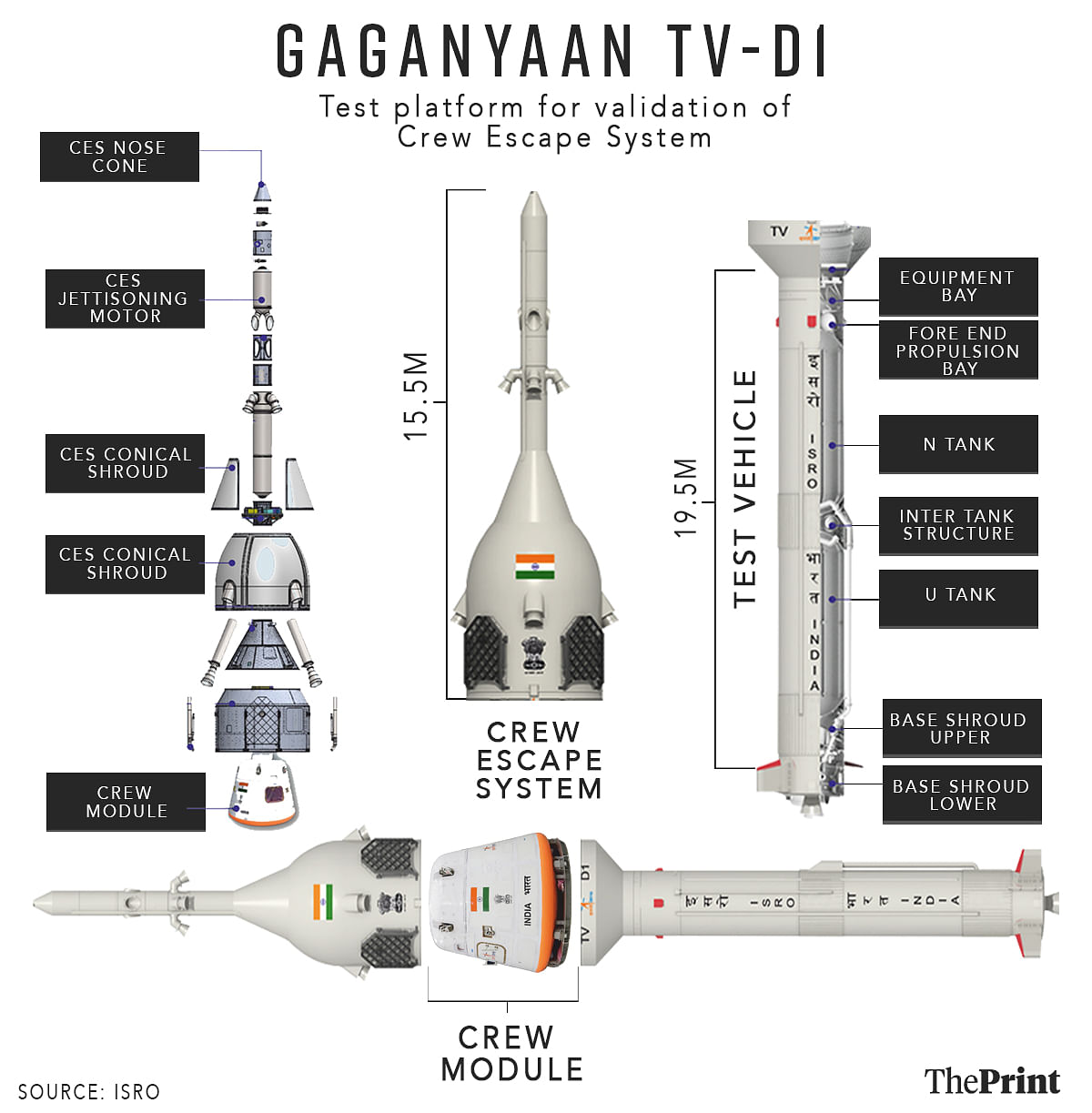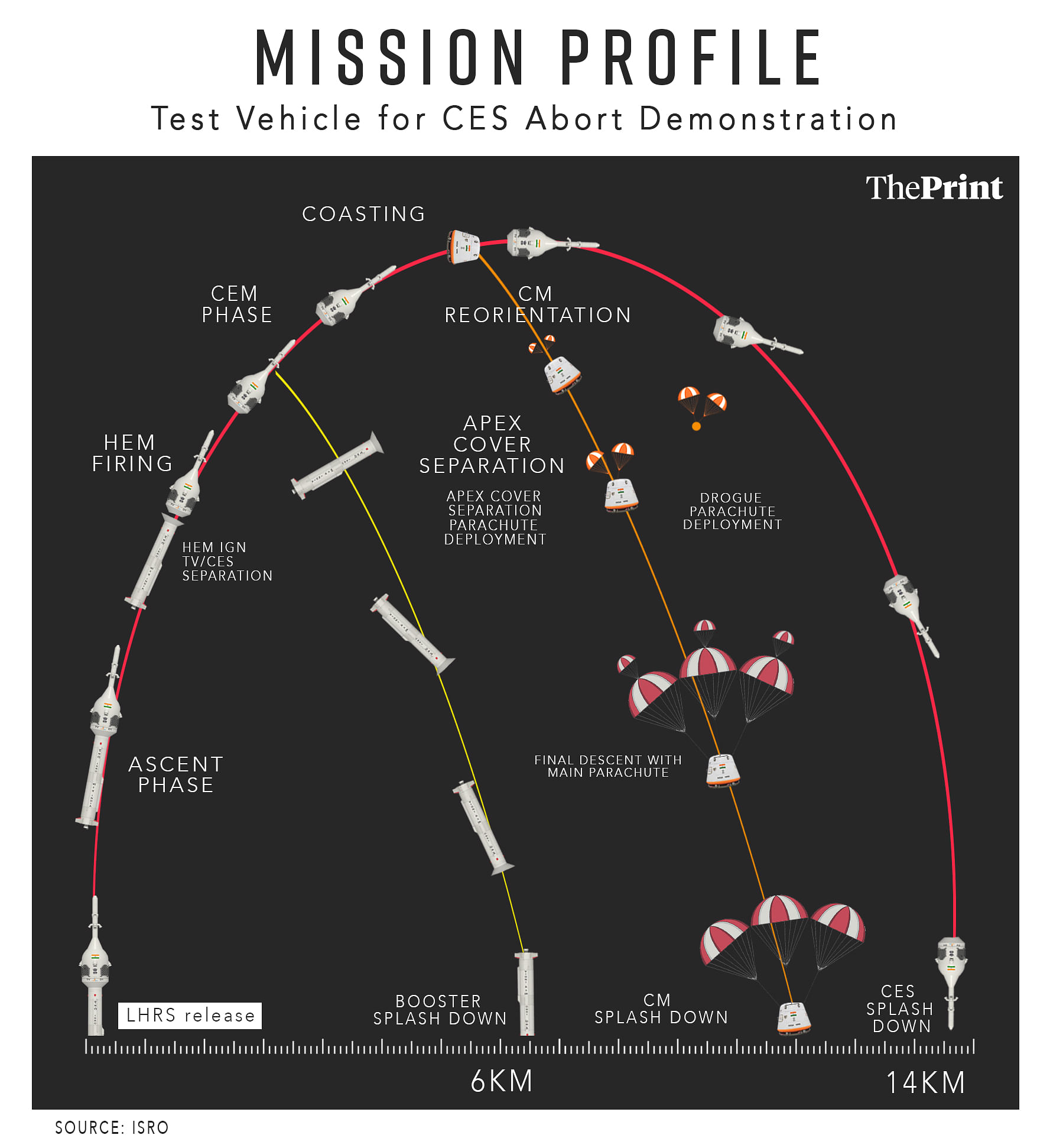Test flight at Sriharikota to last just over 8 minutes. It will check
deceleration systems, parachute deployment, and structural integrity of crew
module after separation from spacecraft
Bangalore: The Indian Space Research Organisation (ISRO) is bracing for its
next test of the country’s first human spaceflight mission Gaganyaan,
scheduled Saturday morning, in which the space agency will assess the crew
escape system (CES).
This is a test to demonstrate that the module in which will house the crew can
separate from the rest of the spacecraft and rocket in cases of emergency, and
keep the humans inside safe.
The test flight will take place between 7 am and 9 am Saturday at Sriharikota,
Andhra Pradesh. It will last for just over eight minutes.
For this demonstration, ISRO will use the newly developed test vehicle or a
rocket, built specifically to test the subsystems inside and the crew escape
system. The test will check deceleration systems, two kinds of parachute
deployment, and the structural integrity of the crew module after separation.
Details of The Test Flight
The crew escape system (CES) sits atop the test vehicle which will launch the
system to space before falling away into the ocean. After the CES separates
from the test vehicle booster, it will coast briefly, climbing to a higher
altitude. Subsequently the crew module will separate from the system.
Once the crew module separates, it will reorient to face upwards. First, a
pair of drogue parachutes will be deployed, which will slow down the rapidly
moving module and decelerate it. The larger main parachutes will then be
deployed, slowing down the falling crew module to very low speeds before it
splashes down into the ocean.
The crew module will then be recovered and analysed.
Gaganyaan Progress
ISRO has performed several tests on both the rocket that will carry the
mission, and the mission spacecraft itself.
It has already tested the engines and boosters that will be used throughout
the mission at various points. It has previously performed static tests of the
crew escape system, of all its motors to see if everything is firing well. It
has also tested the crew module’s propulsion, atmospheric re-entry, and has
tested the drogue and main parachutes that will be deployed after separation.
After this, ISRO is expected to perform some pad abort tests, and then
un-crewed full tests, before Indian astronauts can finally travel up into
orbit in an Indian spacecraft.
Meanwhile, the crew is undergoing training at the Bangalore Astronaut Training
Facility, after having finished preliminary training in Russia. The four
shortlisted male air force candidates are currently training in understanding
flight systems, microgravity, flying in space, medical procedures, academic
courses, flight suits and simulators, and undergoing physical fitness training
as well.
When the first humans will be launched into space from India on the
Gaganyaan-1 flight, they will orbit the earth for four days to a week, before
splashing down into the Indian Ocean.





